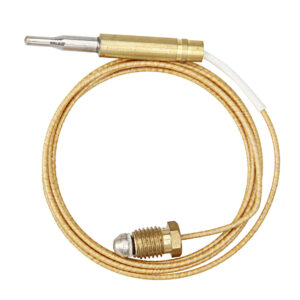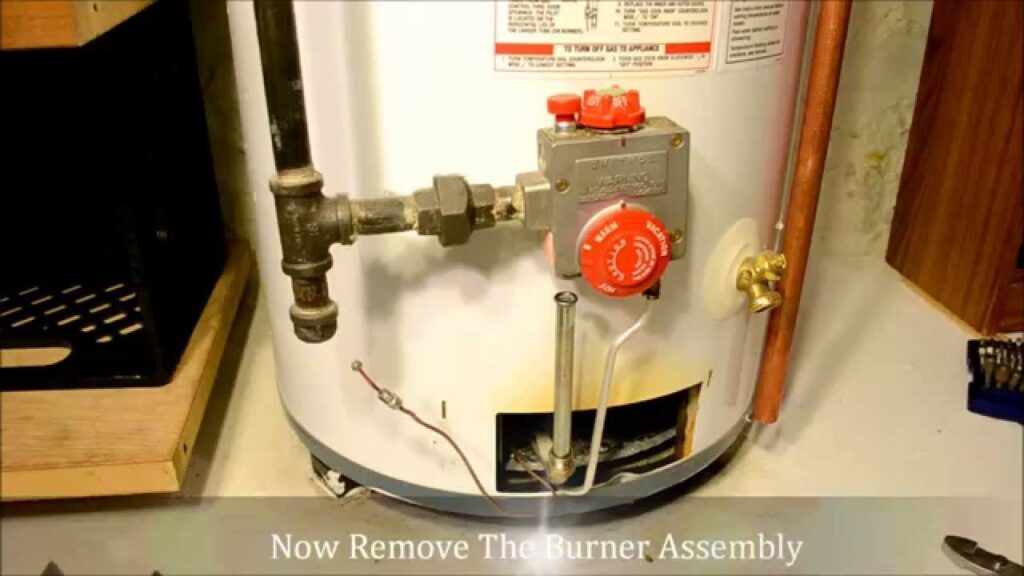Thermocouples are an essential part of nearly every water heater. Even if your water heaters don’t have a thermocouple, it’s important to know what one is.
This article will give you all the information that’s necessary for understanding what a thermocouple does, where they go in the water heater, and how they can affect your home, as well as what to do if you don’t have one.
Do all water heaters have a thermocouple?
The answer is no. Although it is prevalent among gas-powered water heaters, Not all water heaters have a thermocouple. A thermocouple is part of a thermometer that creates an electrical current. In order to prevent water from freezing in cold weather, some water heaters have this same component built into them.
A thermocouple is not found on all water heaters. Some later versions include a sophisticated temperature control system. It is essentially a microprocessor that continually monitors and regulates burner performance while also maintaining consistent and correct water temperature levels. The pilot is activated by the flashing LED.
The thermocouple is a sensor that monitors the temperature of the water and transmits this information to an electronic controller. The flame sensor is usually found on newer electronic controllers whereas thermocouples are typically found on older heaters.
Gas-powered water heaters use a thermocouple to ensure the safety of the operation and gas flow. If your home doesn’t have one, there are other ways to make sure it is running properly and safely.
If your home is powered by natural gas or propane, a thermocouple ensures that your heating unit will work efficiently without causing any safety problems.
Thermocouples are more expensive than flame sensors, but they perform the same job- monitoring the temperature of the water and transmitting it to an electrical device in order for heating or cooling systems to operate properly.
If you have a gas water heater that has a thermocouple failure and it is still under warranty, you can contact the manufacturer and request a free replacement component. When contacting the manufacturer, make sure you have the model number and serial number handy.

What Does the Thermocouple Do on My Water Heater?
The thermocouple on your water heater is a safety measure that prevents gas-powered models from turning into danger. It does this by detecting the level of heat in the unit and shutting it off automatically if it starts to reach dangerous levels.
The thermocouple is a piece of metal that has two strips of different metals joined at one end. One strip is attached to the pilot light and if it fails, the gas line will be closed off.
If the current keeps the valve open when there’s no pilot light, then you need to replace or clean out your water heater thermostat valve assembly immediately as this could cause serious issues with your home!
Thermocouples are used to detect the presence of gas in a water heater and shut off the fuel supply. Some recent models use mercury or flame sensors that sense when there is too much pressure being created, shutting down the gas valve automatically before it can cause any damage.
Electric water heaters don’t need an emergency shut-off system as they do not rely on natural gas for heating purposes at all, making them safe from potential hazards like thermocouple failure or corrosion.
Do electric water heaters have thermocouples?
No. Because some electric water heaters do not use gas, they do not require any form of emergency gas switch like a thermocouple. Thermocouples are commonly seen in gas-powered water heaters. Thermocouples use the principle of negative feedback to regulate temperature, unlike other water heaters that use positive feedback.
How do you know if your water heater thermocouple is bad?
The thermocouple uses a phenomenon called the Seebeck Effect to keep the gas valve open. If your water heater has a thermocouple, there is no need to worry about it being broken or defective.
The most likely cause of a thermocouple not working is that the metal rods aren’t getting enough voltage. They also need to be replaced easily and quickly, which can be done by using a voltmeter to test how much power they’re receiving.
Can I replace a thermocouple myself?
A thermocouple is a device that monitors the temperature of water to ensure it stays within safe limits. If your water heater has one, you’ll need a technician to diagnose any issues and give advice on how to fix them.
If you are DIY-inclined, it’s easiest to shut off the gas valve and remove the whole burner and thermocouple assembly. If you want to replace it yourself, all you need is a screwdriver and replacement parts.
How to replace a water heater thermocouple
- To replace the thermocouple, turn off the heater’s gas control valve and close the shut-off valve on your main gas supply pipe.
- Remove all fasteners that secure the manifold top plate from each side of your water heater and remove it from its location overtop of your hot (or cold) water tank.
- Disconnect the gas and thermocouple lines from the water heater. The old thermocouple can then be removed by twisting it out of its mounting bracket.
- New thermocouples are pushed into their respective mounting brackets that vary depending on the model.
- Reconnect the pilot and burner supply tubes. It’s also important to know that a thermocouple must be hand-tightened so they do not leak or cause any other damage.
- Check for gas leakage. To check for gas leakage, thoroughly clean the thermocouple on a water heater using a soap and water mixture.
- If there are bubbles coming out of the fittings, then re-tighten them with soap and water mixture until you’re sure there’s no leak.
Also Read:
Mike Spencer
Hi Guys, Mike is a Mechanical Engineer who specializes in Heating, Ventilation, and Air-conditioning. His love for humanity and his profession propels him to share useful and factual Information on this blog.

